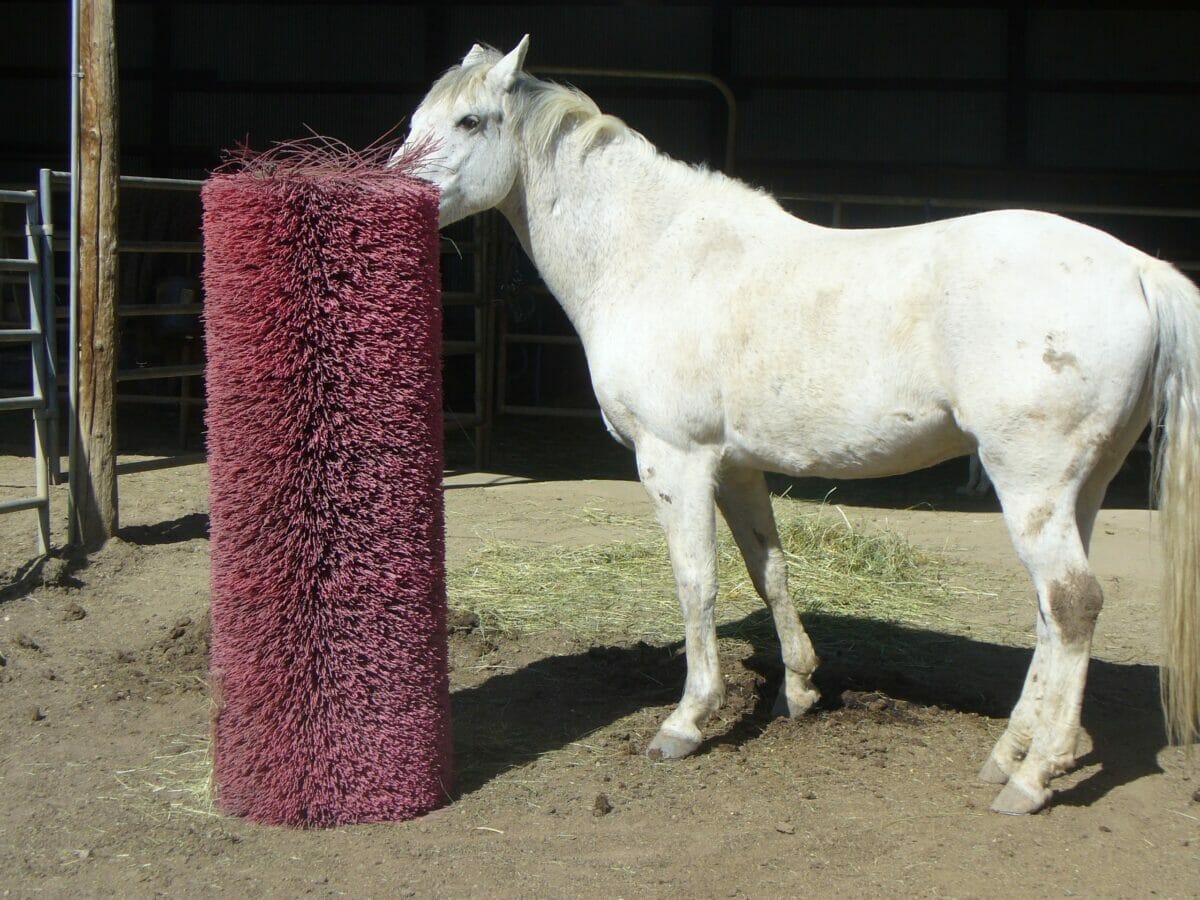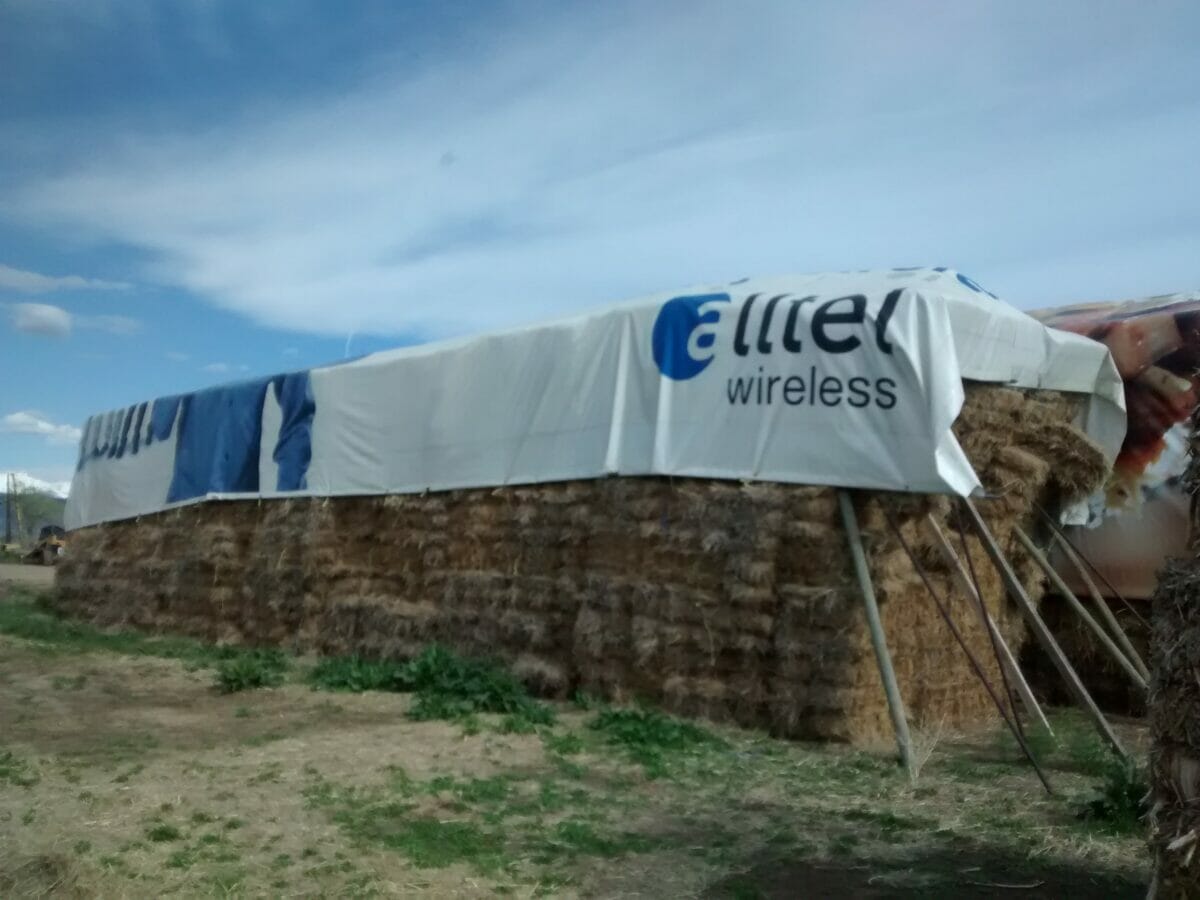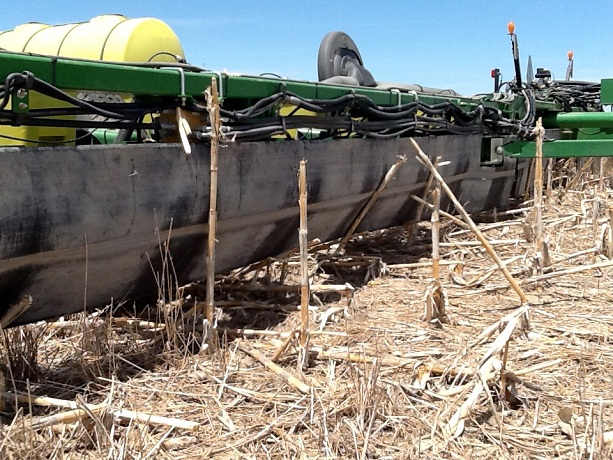These Farmers and Ranchers Turn Trash Into Treasure
Conveyor belting, street sweeper brushes and other discarded materials are getting a second life on farms.
These Farmers and Ranchers Turn Trash Into Treasure
Conveyor belting, street sweeper brushes and other discarded materials are getting a second life on farms.

Street sweepers find new life on the farm.courtesy of Repurposed Materials.
A ranch in Montana is an odd place to find a big, old street sweeper brush, but the bison appear to love it. Yes, we’re talking about those brushes that street sweeper trucks use to push trash around while requiring city dwellers to move their cars. Apparently, after the Department of Sanitation is done with them, sometimes, the brushes get a second life as a bison back scratcher.
“People, city slickers really, think it’s the funniest thing,” says Damon Carson, founder and president of Repurposed Materials. The company, a sort of industrial thrift store, brings in used materials from American industry and resells them for new purposes. It currently has five yard locations—in Arizona, Colorado, Iowa, Texas and South Carolina—where people can come see and purchase the repurposed materials.
Farmers and ranchers are the ultimate innovators, finding all kinds of creative uses for items that would otherwise end up in a landfill—or, sometimes, that already have.
“All the rope I use I get at the dump,” says Abby Barrows, a Stonington, Maine-based oyster farmer and marine scientist researcher. Barrows, who, in her work as a marine scientist, focuses on microplastics in the ocean, has reused various materials since buying the oyster farm in 2015.
“It’s been my flavor going into it,” says Barrows, who inherited flotation devices for the oyster bags on her farm made of cedar and housing installation from the previous owner of the oyster farm. She also built an oyster tumbler using wood that she and her husband cut and milled themselves and oversized PVC piping in which they drilled holes.
Despite the ingenuity, Barrows is concerned about the use of plastic gear in aquaculture. Thanks to a grant, she’s now researching, designing and building alternatives to plastic gear and experimenting with metal, cedar, cork and even mycelium.
Of course, not all farmers have easy access to a dump with a lot of old yet still reusable rope from lobstermen, and Carson, who started Repurposed Materials more than a decade ago, sees the business as a conduit for reusing what would otherwise be wasted.

“We look forward to being a resource on any byproducts, waste, inventories or equipment that would be a candidate for repurposing,” says Carson. “Maybe items that have been depreciated out, overorders on a job or inventory from a project that got canceled.”
In addition to those retired street sweeper brushes becoming backscratchers for horses or cattle, the company has seen decommissioned fire hoses get an extended life as a boat dock fender and obsolete ski lift cables become a hand railing in a luxury condo building. One of the most popular items they sell to farmers, though, is old conveyor belting from the mining industry.
“It’s a Swiss Army knife of sorts. There’s all kinds of problems you can solve with a roll of old mine belting on a farm and ranch,” says Carson.

That belting has been used by no-till farmers as a way to keep corn and sunflower stalks from tearing planters. It’s been turned into windbreaks that protect livestock against blowing snow and cold winds and even as slings that go under the belly of dairy cows during hoof trimming.
On Heermance Farm in Tivoli, New York, Kevin Ferry—who grows hundreds of specialty vegetables such as Vietnamese water spinach, lemongrass and Thai ginger for New York City restaurants—uses leftover construction plumbing for OMRI-certified organic grow troughs, turns old kitchen racks into microgreens and seedlings racks and repurposes shipping containers as growing containers and poultry incubators. Shipping containers are probably one of the things most of us have heard of farmers and artisan food producers using, be it for mushrooms or even cheese. Still, it’s just one of many ways farmers and ranchers are solving problems with previously used materials.
Carson, who opened the fifth branch of Repurposed Materials earlier this year and has another one planned for later on in the year, continues to be amazed by all the uses farmers and ranchers find for discarded materials. He’s seen farmers and ranchers use mining truck tires as cattle water tanks, railroad rails as cattle guards, highwater guardrails for horse pens, concrete railroad ties as farm creek crossing and much more.
“Every day we see just how resourceful the ag community is by the used materials they buy from us and then the problems they solve with these used materials,” he says.
Follow us
This work is licensed under a Creative Commons Attribution-NoDerivatives 4.0 International License.
Want to republish a Modern Farmer story?
We are happy for Modern Farmer stories to be shared, and encourage you to republish our articles for your audience. When doing so, we ask that you follow these guidelines:
Please credit us and our writers
For the author byline, please use “Author Name, Modern Farmer.” At the top of our stories, if on the web, please include this text and link: “This story was originally published by Modern Farmer.”
Please make sure to include a link back to either our home page or the article URL.
At the bottom of the story, please include the following text:
“Modern Farmer is a nonprofit initiative dedicated to raising awareness and catalyzing action at the intersection of food, agriculture, and society. Read more at <link>Modern Farmer</link>.”
Use our widget
We’d like to be able to track our stories, so we ask that if you republish our content, you do so using our widget (located on the left hand side of the article). The HTML code has a built-in tracker that tells us the data and domain where the story was published, as well as view counts.
Check the image requirements
It’s your responsibility to confirm you're licensed to republish images in our articles. Some images, such as those from commercial providers, don't allow their images to be republished without permission or payment. Copyright terms are generally listed in the image caption and attribution. You are welcome to omit our images or substitute with your own. Charts and interactive graphics follow the same rules.
Don’t change too much. Or, ask us first.
Articles must be republished in their entirety. It’s okay to change references to time (“today” to “yesterday”) or location (“Iowa City, IA” to “here”). But please keep everything else the same.
If you feel strongly that a more material edit needs to be made, get in touch with us at [email protected]. We’re happy to discuss it with the original author, but we must have prior approval for changes before publication.
Special cases
Extracts. You may run the first few lines or paragraphs of the article and then say: “Read the full article at Modern Farmer” with a link back to the original article.
Quotes. You may quote authors provided you include a link back to the article URL.
Translations. These require writer approval. To inquire about translation of a Modern Farmer article, contact us at [email protected]
Signed consent / copyright release forms. These are not required, provided you are following these guidelines.
Print. Articles can be republished in print under these same rules, with the exception that you do not need to include the links.
Tag us
When sharing the story on social media, please tag us using the following: - Twitter (@ModFarm) - Facebook (@ModernFarmerMedia) - Instagram (@modfarm)
Use our content respectfully
Modern Farmer is a nonprofit and as such we share our content for free and in good faith in order to reach new audiences. Respectfully,
No selling ads against our stories. It’s okay to put our stories on pages with ads.
Don’t republish our material wholesale, or automatically; you need to select stories to be republished individually.
You have no rights to sell, license, syndicate, or otherwise represent yourself as the authorized owner of our material to any third parties. This means that you cannot actively publish or submit our work for syndication to third party platforms or apps like Apple News or Google News. We understand that publishers cannot fully control when certain third parties automatically summarize or crawl content from publishers’ own sites.
Keep in touch
We want to hear from you if you love Modern Farmer content, have a collaboration idea, or anything else to share. As a nonprofit outlet, we work in service of our community and are always open to comments, feedback, and ideas. Contact us at [email protected].by Bridget Shirvell, Modern Farmer
May 23, 2022
Modern Farmer Weekly
Solutions Hub
Innovations, ideas and inspiration. Actionable solutions for a resilient food system.
ExploreExplore other topics
Share With Us
We want to hear from Modern Farmer readers who have thoughtful commentary, actionable solutions, or helpful ideas to share.
SubmitNecessary cookies are absolutely essential for the website to function properly. This category only includes cookies that ensures basic functionalities and security features of the website. These cookies do not store any personal information.
Any cookies that may not be particularly necessary for the website to function and are used specifically to collect user personal data via analytics, ads, other embedded contents are termed as non-necessary cookies.
If you tend to get stuck in snow, sand or mud, you have options [stay home is not one of them]. You can buy the expensive plastic mats/ramps that don’t store well and break in the cold and warp in the heat. Or you can recycle old snowmobile tracks, which roll up, have cleats on one side, and can handle anything. Two of those will almost always get you out.
Sounds very good. The less wasted, the more saved.